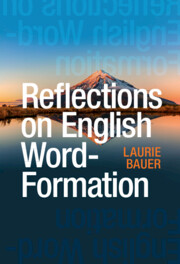Book contents
- Reflections on English Word-Formation
- Reflections on English Word-Formation
- Copyright page
- Contents
- Acknowledgements
- Conventions and Abbreviations
- 1 Introduction
- Part I Basic Questions
- Part II Semantic Questions
- Part III Syntactic Questions
- Part IV Interfaces
- Part V Patterns of Word-Formation in English
- Part VI Historical Questions
- Part VII Questions Involving Inflection
- 27 Reflections on Inflection inside Word-Formation
- 28 Reflections on Canonical Form
- 29 Reflections on the Spread of Regular Inflection to Simple and Derived Forms
- 30 Conclusion
- Index of Topics
- Index of English Word-Forming Elements
- References
29 - Reflections on the Spread of Regular Inflection to Simple and Derived Forms
from Part VII - Questions Involving Inflection
Published online by Cambridge University Press: 03 October 2025
- Reflections on English Word-Formation
- Reflections on English Word-Formation
- Copyright page
- Contents
- Acknowledgements
- Conventions and Abbreviations
- 1 Introduction
- Part I Basic Questions
- Part II Semantic Questions
- Part III Syntactic Questions
- Part IV Interfaces
- Part V Patterns of Word-Formation in English
- Part VI Historical Questions
- Part VII Questions Involving Inflection
- 27 Reflections on Inflection inside Word-Formation
- 28 Reflections on Canonical Form
- 29 Reflections on the Spread of Regular Inflection to Simple and Derived Forms
- 30 Conclusion
- Index of Topics
- Index of English Word-Forming Elements
- References
Summary
A word like tenderfoot has two possible plural forms: tenderfoots and tenderfeet. Why is a regular plural allowed in this word, and what factors license such unexpected regularity? Various factors are considered here, one of which has previously been ignored, and the fact that usage is divided and apparently unpredictable is discussed.
Keywords
Information
- Type
- Chapter
- Information
- Reflections on English Word-Formation , pp. 225 - 231Publisher: Cambridge University PressPrint publication year: 2025
